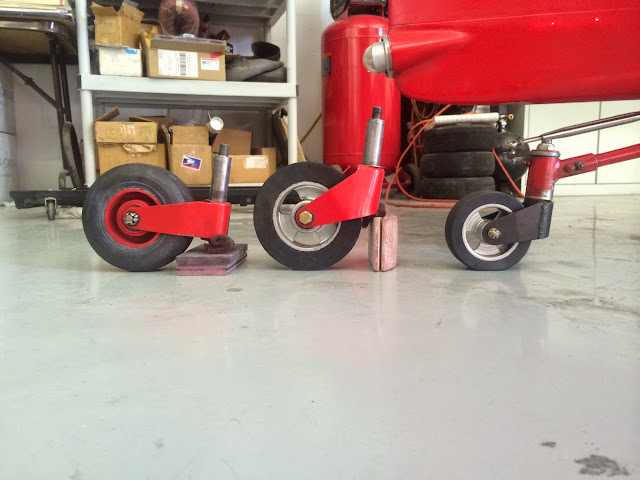Toobuilder
Well Known Member
While fully functional, I've never been a fan of steerable tailwheels with the external chains, springs, etc. So in the spirit of "why not?", I decided to try a locking tailwheel for the Rocket. And of course, I didn't like what was commercially available, so I decided to whip up a prototype and see how it worked. Admittedly, the design goals, even if fully realized, are hardly a clear cut advantage over the Vans or similar designs. The design goals in no particular order are as follows:
Lighter (nailed it- this one is half the weight of the standard setup)
Less drag (probably - but doubtful I'm going to see a speed increase. I'm going to claim 50 knots until testing proves otherwise)
Less likely to snag on stuff (the wheel is smaller, but the whole assembly is shaped to slide over obstructions)
No load on the rudder (yep, no connection at all)
And the big one: satisfy my restless need to change a perfectly functional design for no apparent reason.
Anyway, the concept of operation revolves around a spring loaded pin that locks the kingpin within a few degrees of center. When locked, I have enough slop and flex in the stinger to perform shallow s turns on the runway, but I need to unlock for tighter stuff. I have made a few landings with the thing completely unlocked as well as locked. Neither are a problem in normal wind conditions. Now that it's installed "permanently", we'll see how it holds up in regular service.
I'll keep you posed as I get some hours on it.


Lighter (nailed it- this one is half the weight of the standard setup)
Less drag (probably - but doubtful I'm going to see a speed increase. I'm going to claim 50 knots until testing proves otherwise)
Less likely to snag on stuff (the wheel is smaller, but the whole assembly is shaped to slide over obstructions)
No load on the rudder (yep, no connection at all)
And the big one: satisfy my restless need to change a perfectly functional design for no apparent reason.
Anyway, the concept of operation revolves around a spring loaded pin that locks the kingpin within a few degrees of center. When locked, I have enough slop and flex in the stinger to perform shallow s turns on the runway, but I need to unlock for tighter stuff. I have made a few landings with the thing completely unlocked as well as locked. Neither are a problem in normal wind conditions. Now that it's installed "permanently", we'll see how it holds up in regular service.
I'll keep you posed as I get some hours on it.


Last edited:





